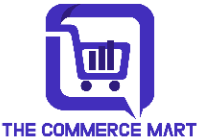Email marketing should be on the top-priority list when it comes to running an e-commerce store. Why? Because it’s one of the best ways to start a relationship with clients, get sales up and expand your business. In this ultimate guide to e-commerce email marketing, I’ll show you how to create effective campaigns that convert, so you can start seeing real results.
What is E-commerce Email Marketing?
E-commerce email marketing is the practice of sending promotional messages to your subscribers via email. These messages may contain information about new product launches, specific promotions, or any other content that you consider relevant to your customers. To build rapports with your subscribers, and to persuade them to be involved in your brand, as well as lead to higher sales over time, is the goal of e-commerce marketing email.
Why is Email Marketing Important for E-commerce?
Here are some of the most crucial justifications for email marketing’s importance in e-commerce:
- It’s cost-effective: Email marketing is one of the most cost-effective marketing channels available. According to research from the Direct Marketing Association, email marketing’s annual return on investment is, 4300% and implies that you can get $43.00 for every $1 invested in an email campaign.
- You can connect with your customers through email marketing: By giving them valuable information and promotion they’re not finding anywhere else, you can establish a relationship with your customers. By doing so, you’ll turn onetime customers into loyal fans who’ll continue to buy from your store in the future.
- It’s highly targeted: With e-commerce email marketing, you can segment your subscribers based on their interests, behaviors, and purchase history. This enables you to send messages with very specific content that will be more likely to attract your audience and cause them to buy.
- It’s measurable: With email marketing, you can monitor the open rate, click through and conversion rates, which enables you to see what is working well for your campaigns. In the future campaigns, such information may be used to make appropriate decisions.
How to Get Started with E-commerce Email Marketing
Getting started with e-commerce email marketing is easy. Here are the steps you need to follow:
- To select an email marketing service: There are so many services available, but Mailchimp, Constant Contact and Klaviyo account for the largest number of users. Choose one that is most appropriate for your needs and budget.
- Build your List: Your email list is the foundation of your email marketing campaigns. To build your list, you can offer incentives such as discounts, freebies, or exclusive content in exchange for subscribers’ email addresses.
- Segment your List: Once you have subscribers on your list, it’s important to segment them based on their interests, behaviors, and purchase history. This allows you to send targeted messages that are more likely to convert.
- Create a campaign: a clear CTA call to action, a compelling subject line and content that is relevant and valuable to your subscribers, should be included in your campaign.
- Track your Results: After sending your campaign, track your results to see how well it performed. Use this data to make informed decisions about future campaigns.
Best Practices for E-commerce Email Marketing
It is important to follow good practices to take full advantage of e. Commerce email marketing campaigns. Here are a few tips:
- Personalize Your Messages: Use subscribers’ first names and other personal information to make your messages feel more personalized.
- Segment your List: As mentioned earlier, segmenting your list allows you to send targeted messages that are more likely to convert.
- Provide Value: Your subscribers should feel like they are receiving something of value in exchange for their email address. Make sure that your emails provide them with valuable content, whether that be exclusive discounts, new product announcements, or interesting blog posts.
- Keep it Short and Sweet: People are busy, and they don’t have time to read long, rambling emails. Keep your emails short and to the point, and include a clear CTA.
- Test Your Emails: Test different subject lines, content, and CTAs to see what resonates best with your subscribers. Use this data to optimize future campaigns.
- Be Consistent: Consistency is key when it comes to email marketing. Make sure to send the messages on time, whether it’s once a week or every other month. That way, your subscribers will continue to engage in and take an interest in your brand.
Conclusion
Finally, e-commerce Marketing Email is a powerful tool for building relationships with consumers, increasing sales and growing your business. By following the steps outlined in this ultimate guide, you can create effective campaigns that convert, and follow best practices to ensure that your emails are getting the most engagement possible. Remember to personalize your messages, segment your list, provide value, keep it short and sweet, test your emails, and be consistent. You’ll be on your way to success as an e-commerce email marketing entrepreneur thanks to these tips..


Leave a Reply